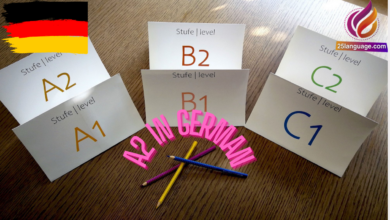Noun Genders in German

Noun Genders in German, all German nouns have gender. Everything from bee to bird to table and chair is either a masculine, feminine, or neuter noun.
Going from English as a genderless language to German as a language with tree genders is no easy task! It’s a stretch for our brains to think in this new, ‘gendered noun’ way.
Now the big question. How do you know what Noun Genders in German is? Isn’t that going to be complicated?
Even though it might feel a little painful or pointless at first, trust me — you need to learn German genders properly and well if you truly want to speak German.
Every noun is either masculine, feminine, or neuter. I’m going to walk you through how you can more easily figure out a noun’s gender based on … ready for this? … how the word is spelled.
That’s right! Noun Genders in German is determined by its form — especially suffixes, which are little endings such as -at, -ion, -ung, -ig, -um, and more.
As you’re just getting started with German, it’s a good idea to memorize the gender for each isolated noun.
But. The average native speaker (of any language) uses upwards of 20,000 — many of which are nouns. Memorizing the gender each and every noun would be mighty-hard to do.
Luckily, we have a few tricks up our sleeves!
Nouns can be lumped together according to:
- Noun Groups (specific topic groups associated with particular genders)
e.g. all months of the year are masculine - Noun Forms (specific spelling patterns associated with particular genders)
e.g. all nouns ending in -ung are feminine.





























